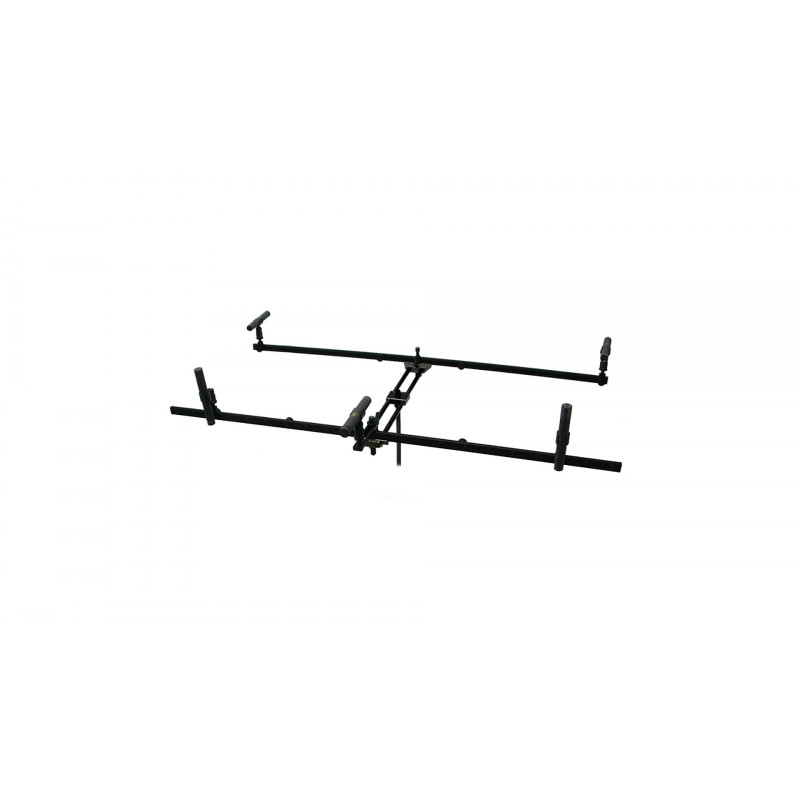



Microphone set for 5.1 surround sound or 3D recording using the OCT technique.
Accessories for this and other products can be found in the category "Accessories".
Microphone set for 5.1 surround sound or 3D recording using the OCT technique.
A single, six-conductor shielded cable with an XLR-7M output connector carries the signals from all three microphones (front mid, figure-8 and rear mid); the AK DMS 3U then splits the three signals out again.
The Sets comprise:
No. 129003, OCT Set:
· 2 * CCM 41 L (compact microphone supercardioid)
· 1 * CCM 4 L (compact microphone cardioid)
· 1 * MAB 1000 (stereo bar)
No. 129004, OCT Surround Set:
· 2 * CCM 41 L (compact microphone supercardioid)
· 3 * CCM 4 L (compact microphone cardioid)
· 2 * MAB 1000 + CB-MAB (stereo bar system)
No. 129005, OCT-3D Set:
· 6 * CCM 41 L (compact microphone supercardioid)
· 3 * CCM 4 L (compact microphone cardioid)
· 2 * MAB 1000 + CB-MAB (stereo bar system)
· 4 * additional rider for MAB 1000 for the upward facing supercardioids
·
More information on OCT and other surround recording arrangements as well as audio samples are available for download below.
The CCM microphones can be replaced with the corresponding combinations of CMC 1 L amplifier and MK capsule.
ORDER NUMBER: No. 129004 OCT Surround Set
Features:
· Microphone set for 5.1 surround sound or 3D recording using the OCT technique
· OCT (Optimized Cardioid Triangle) is a microphone recording technique for the front channels L/C/R by Günther Theile
· good directional imaging characterstics, very linear localization curve
· large listening area due to very little crosstalk between the sectors L/C and C/R
· natural spatial impression through a very natural reflection pattern
· "OCT Surround" is the recording technique that extends OCT by two cardioid microphones for LS and RS
Each CCM/CMC 1 L in this set includes the following accessories: a clamp SGC, a case and an adapter cable K 5 LU (Lemo / XLR-3M).
Practice:
The OCT setup has a forward-facing cardioid microphone for the center channel. For the front L and R channels, two supercardioids are positioned at either end of an imaginary straight line, 8 cm behind the center microphone. The distance between these two microphones is 40 - 90 cm; this distance determines the recording angle. The supercardioids point to the left/right, so they aim at an angle of +/- 90 °. Principle A good separation between the center-to-left sector and the center-to-right sector is obtained with this method. For example, sound originating from the right is picked up only very weakly by the left microphone. Sound from the extreme right will be picked up directly on-axis by the right-facing supercardioid (0 dB) and by the forward-facing cardioid (attenuated by 6 dB due to its directional pattern). Finally it will be picked up, with a delay caused by the increased distance, on the rear lobe of the left-facing supercardioid. The polar pattern attenuation for this will be 10 dB and the polarity will be inverted. These factors prevent the formation of annoying “phantom images“ of sound sources in the wrong sector during playback. A clean center channel is conveyed by this system since front-incident sound is picked up mainly by the cardioid in the center. The left and right microphones, with their high directivity, pick up front-incident sound only at a much lower level. If the cardioid is placed 8 cm forward, the following recording angles will result, depending on the distance between the supercardioids, see also the SCHOEPS Image Assistant: 40cm: 160° 50cm: 140° 60cm: 120° 70cm: 110° 80cm: 100° 90cm: 90° It is better to err in the direction of greater spacing so that one can be sure to avoid center-heavy images. The fact that the supercardioids receive so much of their sound from off axis necessitates the use of small-diaphragm condenser microphones, as only this type of microphone has the requisite independence of frequency response from the angle of sound incidence.